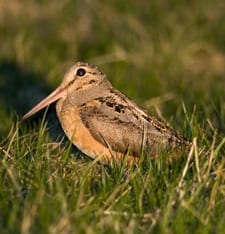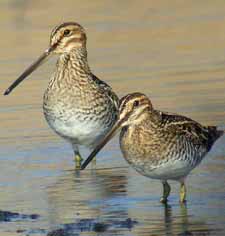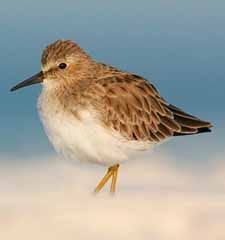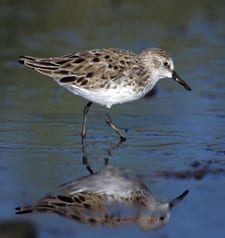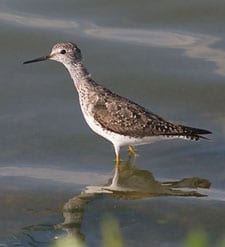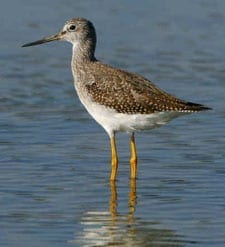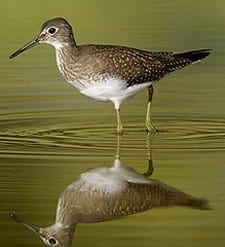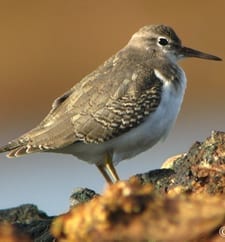American Woodcock
Superbly camouflaged against the leaf litter, the brown-mottled American Woodcock walks slowly along the forest floor, probing the soil with its long bill in search of earthworms. Unlike its coastal relatives, this plump little shorebird lives in young forests and shrubby old fields across eastern North America. Its cryptic plumage and low-profile behavior make it [...]

